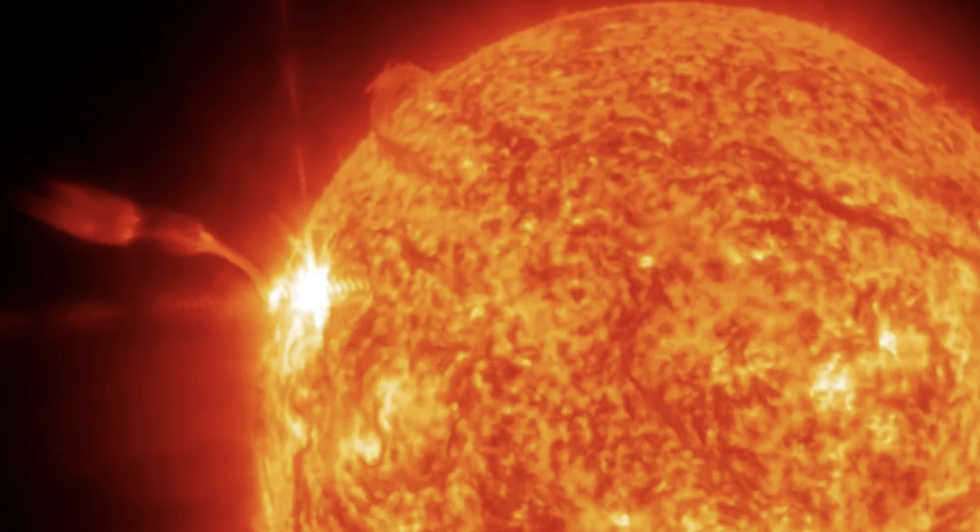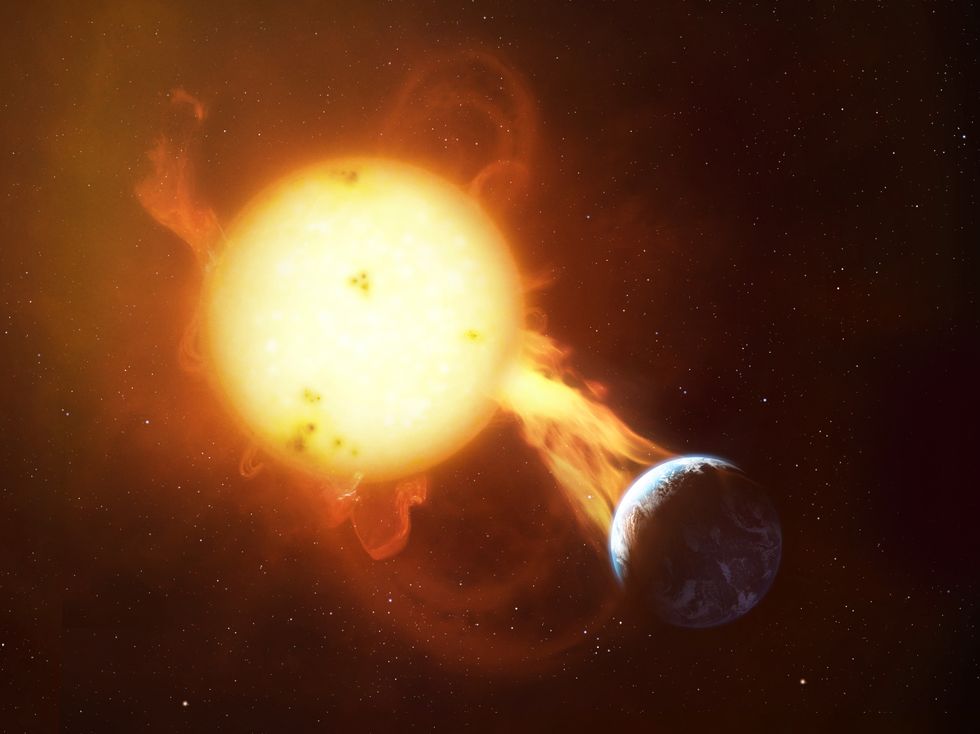Blackout alert issued as Nasa warns of 'huge' solar flare heading towards Earth

Disruption to radio signals could be caused by region AR4087
Don't Miss
Most Read
A massive solar flare has erupted from the Sun, triggering powerful radio blackouts across Europe, Asia and the Middle East.
Scientists are now warning that more disruption could be on the way as the active sunspot region responsible for the eruption rotates directly toward Earth.
The intense eruption came from sunspot region AR4087 and peaked at 4:25am EDT (0825 GMT) on Tuesday (May 14), according to the NOAA Space Weather Prediction Center.
The powerful X2.7-class flare hit the daylight side of Earth with a wave of X-rays and extreme ultraviolet radiation, causing R3-level radio disruptions.

The X2.7-class flare can be spotted on the left
|NOAA Space Weather Prediction Center GOES 19 satellite.
Solar flares are categorised by strength from A, B, C, M to X, with each level representing a tenfold increase in energy.
The X2.7 rating makes this flare one of the strongest seen in months, placing it at the lower end of the most powerful solar flare class but still significantly intense
The sunspot AR4087 is rotating toward Earth and showing signs of increasing volatility. It has already released multiple flares in a matter of hours, including a strong M5.3-class flare shortly before the X2.7 eruption.
Scientists are closely monitoring the situation as the sunspot moves into a position where it could have a more direct impact on Earth.
LATEST SPACE NEWS
 Nasa issued a solar flare alert | GETTY
Nasa issued a solar flare alert | GETTYAurora expert Vincent Ledvina warned of potential escalation, saying on social media: "This is getting intense, especially as this active region turns closer into view.
"This same AR just produced an M5.3 flare a few hours ago. What does this AR have planned over the next days we'll have to wait and see."
The flare caused a rapid ionisation of Earth's upper atmosphere, disrupting high-frequency radio signals across large regions. According to the SWPC, the United States and other regions could see further flaring in the coming days, potentially causing communication blackouts and power grid disturbances.
There's also an increased chance of auroral displays appearing further south than usual as the sunspot moves into a more geoeffective position.
The X2.7 event marks the most powerful flare since March, when the Sun produced an X1.2-class flare from a different sunspot region.
With AR4087 turning to face Earth more directly each day, scientists warn that the next flare might not be so harmless, as its position could lead to more direct impacts on our planet's magnetic field.










